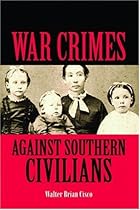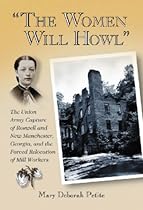Sheridan's 1864 campaign left Valley a 'barren waste'

Credit: The Pennsylvania State Archives
This photograph of Chambersburg after the July 30, 1864, burning is one of many taken in the aftermath. Photographs of Chambersburg in ruins circulated widely in the North and fueled calls for retaliation. That fall General Phil Sheridan's Union forces burned so many crops and barns in the Shenandoah Valley, that, as one observer put it, "a bird flying over the Valley, must carry it's own provender."
Written by
Charles Culbertson
For 13 days in 1864, columns of thick, black smoke — thousands of them — roiled skyward to foul the Shenandoah Valley's air and obliterate the autumn sun. Women and children, weeping and destitute, watched helplessly as soldiers torched their homes and belongings.
Horrified farmers saw their barns and mills consigned to the flames. Thousands of sheep, cattle and other livestock were gunned down in their tracks. Mountains of grain and feed were fired. Standing crops were burned to the ground. Homes were looted.
When the slashing and burning were over, the Breadbasket of the Confederacy was no more.
 The Sept. 26-Oct. 8 Federal destruction of the Shenandoah Valley and its ability to support the Confederate military cause rivaled in severity Sherman's much ballyhooed "March to the Sea." In fact, the methodical, brutal campaign by Gen. Philip H. Sheridan in the Valley caused more damage and did more to hasten the end of the war than did Sherman's haphazard swing through Georgia.
The Sept. 26-Oct. 8 Federal destruction of the Shenandoah Valley and its ability to support the Confederate military cause rivaled in severity Sherman's much ballyhooed "March to the Sea." In fact, the methodical, brutal campaign by Gen. Philip H. Sheridan in the Valley caused more damage and did more to hasten the end of the war than did Sherman's haphazard swing through Georgia.While the great stronghold of Staunton had already fallen that summer, the Valley still provided plenty of sustenance for the Confederacy as well as a natural back door for invasions of the North. In the fall of 1864, Ulysses S. Grant, general-in-chief of the U.S. forces, decided to shut down the Shenandoah Valley once and for all.
"Give the enemy no rest," Grant told Sheridan in August 1864. "Do all the damage to railroads and crops you can. Carry off stock of all descriptions, and negroes, so as to prevent further planting. If the war is to last another year, we want the Shenandoah Valley to remain a barren waste."
 Beginning at Staunton and working down the Valley to Winchester, Sheridan's men torched barns, mills, factories, warehouses, sheds, bridges — anything that could remotely be of use to the Confederate cause. Livestock was confiscated and whatever could not be used by the Federal army was killed. Farm implements of every description were smashed, burned or otherwise rendered useless.
Beginning at Staunton and working down the Valley to Winchester, Sheridan's men torched barns, mills, factories, warehouses, sheds, bridges — anything that could remotely be of use to the Confederate cause. Livestock was confiscated and whatever could not be used by the Federal army was killed. Farm implements of every description were smashed, burned or otherwise rendered useless.
One Federal soldier wrote of standing on a hill at night and seeing so many fires stretching from horizon to horizon that it appeared as if the stars had fallen from the sky.
While the decision to starve out the Confederate army by burning its breadbasket was sound, historians still argue about the necessity of laying waste to homesteads occupied by nothing more combative than women and children.
Tales of Yankee depredations abound. Women living alone watched helplessly as soldiers barged into their homes and stole whatever they wanted. Furniture and valuable heirlooms were smashed. What stores of food the women had managed to salvage were confiscated or destroyed.
And, in the worst instances, Union soldiers callously set fire to the homes themselves, instantly turning innocent women and children into starving refugees.
In Staunton, one of its two newspapers — the Spectator — had been destroyed in June when Union troops invaded the town, but the Vindicator had hidden its type and machinery and had survived. The Valley going up in flames did little to subdue the Vindicator editor's Confederate zeal.
"This war has been declared by the Yankee administration to have been commenced against those in arms against the government of the United States," he wrote. "But now Grant, wearied and sick of fighting the veterans of Lee with no avail, has turned his arms against the women and children of our land, hoping, doubtless, that he may gain a glorious victory (!) over them, a result already discovered by him impossible to be attained over the former."
He claimed that the campaign only harmed already poverty stricken civilians and that Confederate soldiers could draw their rations from other "equally plenteous sources." He predicted there would be, someday, retribution.
There already was, to an extent. Any Union soldier who strayed from the main body of his command — whether on purpose to forage or accidentally — rarely returned alive. Angry Southern bushwhackers and partisans invariably killed them, making the Yankee incursion into the Valley a deadly proposition.
The Vindicator's editorial defiance aside, Sheridan's burning of the Valley did destroy much of the Confederacy's ability to wage war. The final Confederate resistance was at Waynesboro in March the following year, with the end of the war coming just a month later.
Posted with permission,
The Leader & Author, Charles Culbertson











<< Home